Apr 18, 2025
Apr 18, 2025
The Many Forms of Shiva
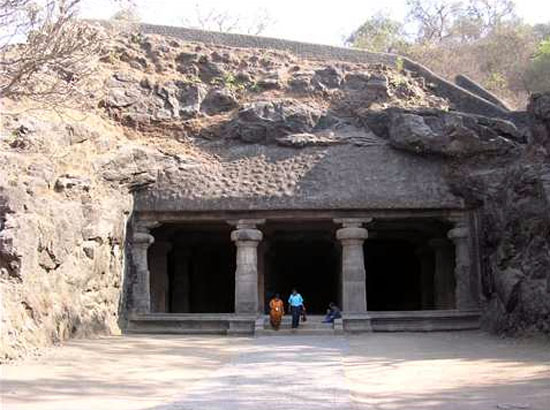
On an island thirty minutes boat ride away from Mumbai harbor, the rock-cut caves of Elephanta could date back to 600 AD, and are one of the principal tourist attractions of the city. The island is today full of tourists, and the associated small-business people, and the fifteen minute trek to the top of hill is not silent any more, but we can imagine that at one time, centuries ago, the Shiva cult that inspired this temple complex demanded silence and solemnity – a place of worship in the middle of the vast ocean.
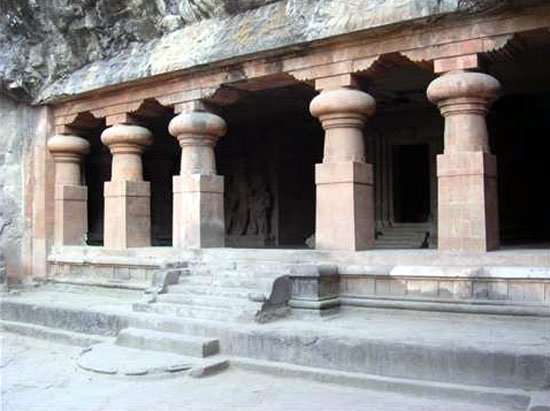
There is little information or records that indicate the precise date of the Elephanta caves, neither are there inscriptions on or inside the caves themselves. Dating has usually been done by comparing Elephanta to other similar monuments in the region. In the absence, thus, of any clear consensus, the most widely accepted view is that the Kalachuri dynasty were the most probable patrons of the cave complex.
What is certain, however, is that the Elephanta caves have been described by writers, among them European travellers, since the 16th century.
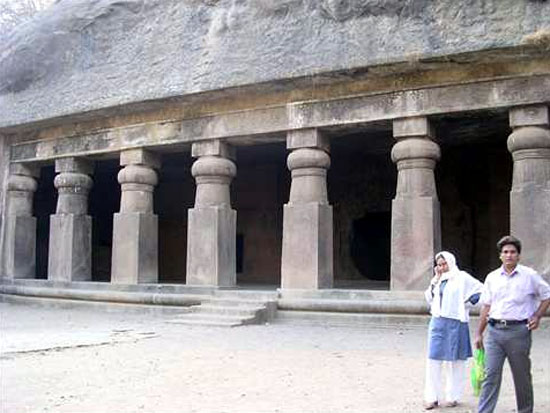
The earliest documented description is that of Garcia da Orta, who sailed with his countryman, the Portuguese ship captain and adventurer Martim Afonso de Sousa. Da Orta, describing Elephanta, records the following:
Another pagoda, the best of all, is on an island called Pori, which we call the Isle of the Elephant. On it there is a hill and in the upper part of it is a subterranean house worked out of the living rock…On the walls, all round, there are sculptured images of elephants, lions, tigers and many human images, some like Amazons, and in many other shapes well sculptured…
Form and Iconography
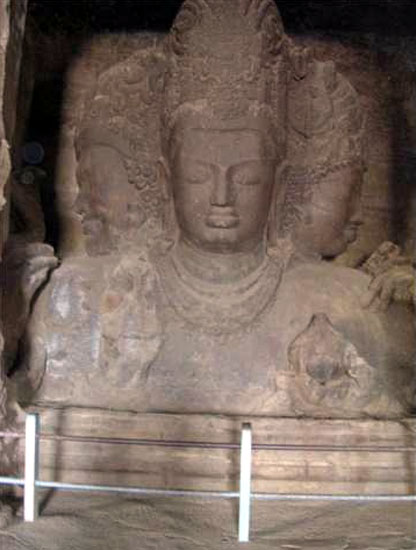 From this and other initial records, research on Elephanta gradually intensified, with the British extensively documenting the island cave complex and identifying what the carvings inside represented. In modern times, the Elephanta cave temple has been fully identified as a complex dedicated to Shiva and his various forms, and extensive studies on its iconography are under way.
From this and other initial records, research on Elephanta gradually intensified, with the British extensively documenting the island cave complex and identifying what the carvings inside represented. In modern times, the Elephanta cave temple has been fully identified as a complex dedicated to Shiva and his various forms, and extensive studies on its iconography are under way.
Comparisons have been made, and not unreasonably, to earlier Hindu temples dating from the 6th and 7th centuries BC. This is evident when one looks at the temple plan: a basic pillared hall culminating in the principal deity-chamber: the garba-griha. Constraints of carving within rock mean that the pillars of the hall are not necessarily orthogonal, and the temple is embellished with several subsidiary shrines on the sides. Entrances from the north, east and west are flanked by more sculpture depicting Shiva in various forms and incarnations.
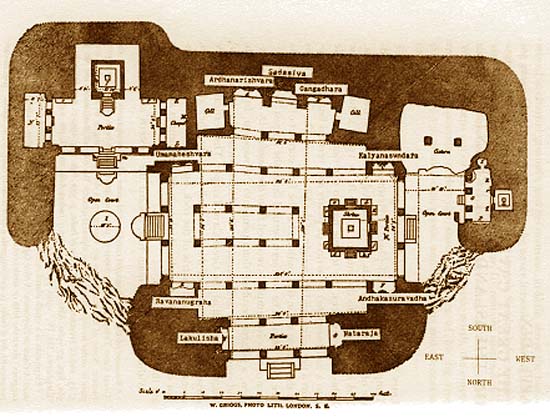
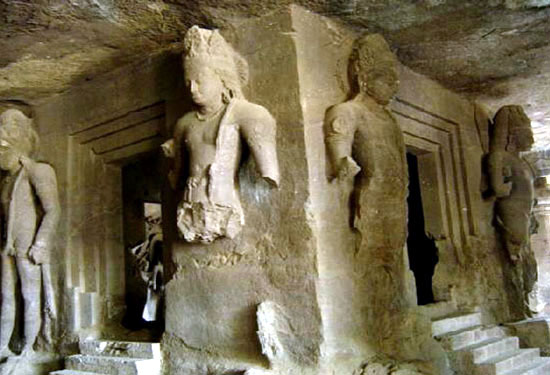
The garba-griha itself encloses the main lingam, representative of Shiva and male energy, while the southern wall showcases Sadasiva, flanked by chapels to Ardhanareshvara (Shiva, the androgynous god) and Gangadhara (the bearer of Ganga, from her fall from heaven). Rock-cut mouldings frame these spaces, thus giving the interior a sense of architectural progression and hierarchy.
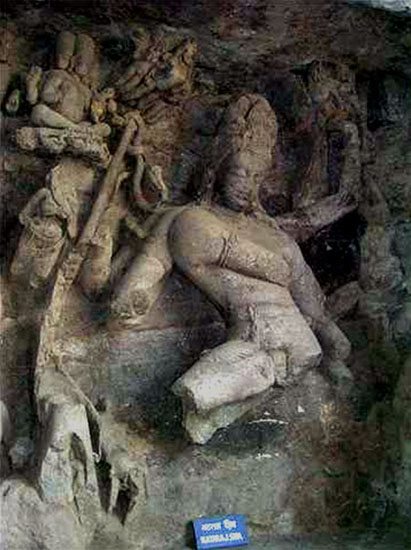
Other wall-niches depict Shiva in other scenes – as the killer of the demon Andhaka, as the dancer Nataraja sustaining the cosmic cycle, as Umamaheshvara, Uma’s (Parvati’s) consort, as Ravananugraha, the god who by his little toe alone stops Ravana from shaking a mountain.
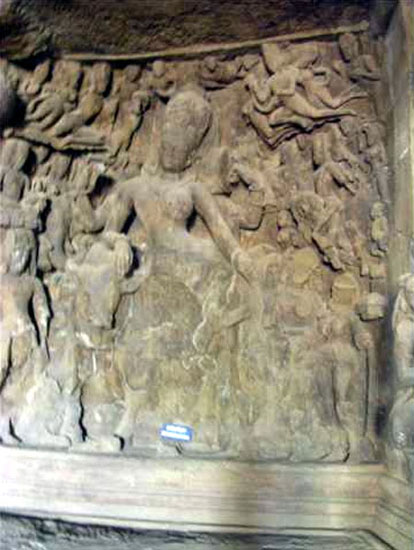
Elephanta today bears marks of much use and abuse – from the ravages of time to the bullets of drunken sailors, the temple has lost much of its former glory and stands a mute testimony to the cult of Shiva – Rudra, the Wild God, Pashupati, the God of Wild Animals, the Indus Valley cult figure who was assimilated in Vedic culture and would go on to become one of the most important figures of the Hindu pantheon.
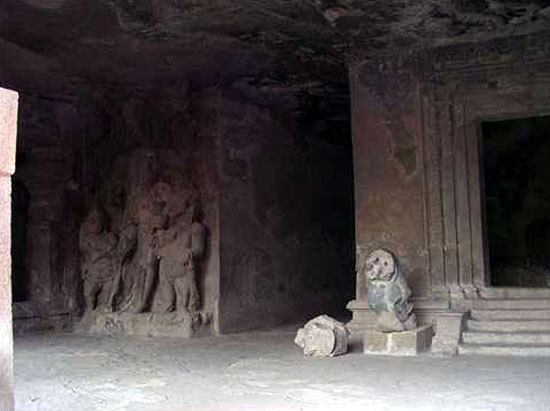
Outside, the island teems with tourists – attracting as many as the entire city of Mumbai – but the question is, what is tourism doing to the already-fragile man-made treasure that is the isle of Elephanta?
29-Apr-2004
More by : Ashish Nangia

|
Dear Readers Thanks ever so much for your comments over the years. I am pleased to announce that we will have a monthly prize to the best comment. Best comments are those which significantly advance our understanding and appreciation of Indian Architecture. Good Luck, and Keep Posting! |

|
The garba griha and sadasiv lingam is awesome, and the map, I never saw that before, good research done by you, keep up the good work. |

|
after seeing this site and the actual elephanta caves i am really facinated of it, really amezing, but feel very bad by seeing the damage of the sculpture by some bad peoples. but thanks to govt. and archeological survey of india for preserving it in a very better condition |